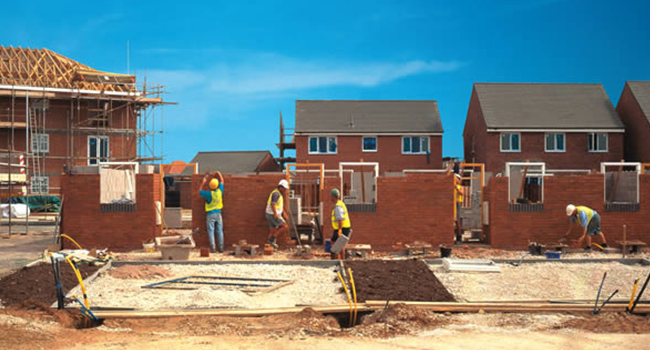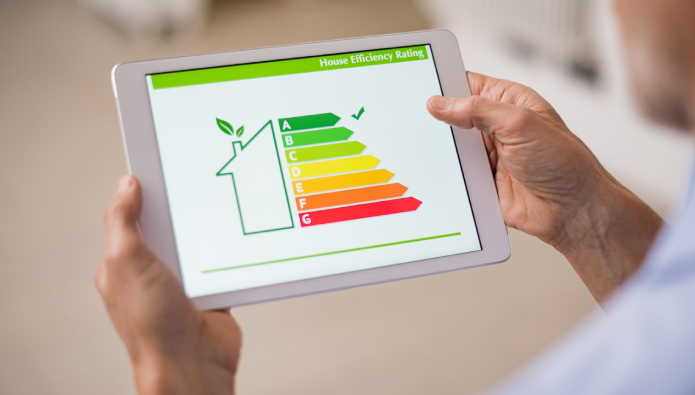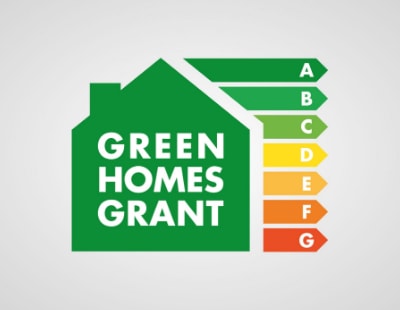It has been an interesting ride through recessions, Liverpool being awarded European Capital of Culture, mass brawls to get into property auctions, the financial crash, huge property price uplifts and now Covid-19. We have been going at constant warp speed and nobody can say it has been a boring couple of decades.
As part of the Covid-19 recovery plan, Rishi Sunak announced the roll out of the Green Homes Initiative (GHI), a £2 billion investment designed to both improve the nation’s housing stock and get builders back to work. FANTASTIC, I thought. I am a property owner so I qualify for the grants and can improve all my property free of charge, right?
Well…no, not quite. The process to get the grant money can be pretty complicated and, more importantly for this time-specific grant that ends in March 2021, there are few builders out there who are qualified to deliver the work. Also, be aware that this scheme will pay for two thirds of the costs but the owner must stump up the last third of the money.
So how do I get the grant? First thing is to visit the government website at https://www.gov.uk/guidance/apply-for-the-green-homes-grant-scheme and check your eligibility for the £5,000 grant (I have yet to find anyone who is not eligible).
The great thing about this scheme is that landlords can get it as well as owner-occupiers, and the grant is not related to the tenants being in receipt of any particular benefits. If a homeowner is on benefits, they may qualify for a higher grant of up to £10,000.
Once you confirm you can get the grant, then the fun begins. You need to work out what you need, and options include internal and external wall insulation, double glazing (if you only have single glazing now), air source heat pumps, loft insulation, etc – the list is pretty long and most of us will need something, so do persevere.
It is now a simple matter of going on the next website and working through the questions
There are Tier 1 and Tier 2 measures and you need to get at least one Tier 1 measure to qualify for the full grant. The websites are very good and they explain all this for you.
Now the difficult bit. You need to find a builder who is qualified to install the measures you are after. Be aware that some builders can do some measures but not others (I will talk about the qualifications needed later in the article). This is where you may want to find a quiet room and get a bottle of wine as you could be in for the long-haul.
Simply put, there are not enough building companies out there who meet the criteria the government have set (to be Trustmark registered and also PAS2030 qualified) to deliver the scheme at standard and at pace.

My own building company are Trustmark registered and we are now going through the process to get PAS2030 accreditation. Having been researching this since the government first published the criteria on August 28, I know how hard it can be to get registered to deliver the work for clients who want to access the GHI.
As builders, we need to register with a governing body, train, qualify and then have our work inspected for each measure we want to install. This will cost me many £1,000s and a lot of time to achieve – despite being previously assessed by FMB, Trustmark and various other agencies, and having done this work for many years.
We then need to pay the governing body a fee to design, register and inspect the work (simple stuff like loft installation needs no design element). Inevitably, the additional costs of this will have to be reflected in the quotes we put forward to our clients.
Despite all this, I see the benefits in the proposed scheme. We all remember the debacle of the Green Homes grants and the ECO schemes. The grants process was hijacked by cowboy builders with no knowledge of retrofit energy measures, who chased the grant money and had no regard to standards.
The failure rate on many of these jobs was 10%+ and some homeowners are still living with damp houses and other effects of poor workmanship.
I also understand the Chancellor’s desire to get building companies back to work post-Covid and I applaud him for his efforts.
The concept is a great one and meets people's needs on several levels. My concern is that he has raised property owners expectations that they will all be able to pick up the phone, speak to a local builder and get £5k’s worth of energy improvements done free of charge before April. That is simply not going to happen.
So, what’s the future?
This grant scheme ends on March 31 2021 ,but the government and all the other political parties have committed to the country being carbon neutral by 2050. That is a huge ask and improving the energy efficiency of our homes will be a big part of that.
The minimum energy efficiency standards (MEES) have already raised the bar for rental property and there is a clear direction of travel on this. Landlords will have to improve the energy efficiency of their properties or they will be prevented from renting them out, and new build homes must meet ever higher standards.
I am quietly confident that there must be further grant monies or other financial incentives to landlords and homeowners to hit these targets. Without government support, there is simply no way we can afford the projected £50 billion required to meet carbon neutral by 2050.

The pathway to achieve the 2050 target has already been set by a working group of industry players, energy efficiency manufacturers and government, and the results seem pretty good in my opinion. The boring bit full of acronyms is next, so feel free to get a coffee and return when this is all over.
First, a few TLA’s (three letter abbreviations for those not in the know). Every industry likes their abbreviations; it excludes outsiders and makes us feel important. The retrofit energy conservation industry is no different from others, so here goes.
BSI - British Standards Institute
PAS - Publicly Accessible Standards
PAS2030 (:17 or :19) – the quality standard related to installation of energy efficiency measures
OCB – Official Certification Body
PAS2035:2018 – specification for the energy retrofit of domestic buildings
MCS – certifying body for low carbon renewables
ECO – Energy Company Obligations
MEES – Minimum Energy Efficiency Standards (currently EPC rating E for landlords)
Retrofit coordinator – the “project manager” for all retrofit measures under PAS2035:2018
BSI PAS2035 was published in June 2019 and aimed to provide a framework for all future retrofit energy saving measures that want to access ECO funding, and leads on from elements of PAS2030.
There is a transition period to June 2021 after which all projects must meet PAS2035 standards if they want to access public funds and grants.
This standard was introduced to make sure that the project is well-planned, carried out by people who know what they are doing and is checked at the end to ensure standards are met. It was drawn together by the great and the good in the industry and is a very welcome result of years of discussion following the failure of previous green schemes. If you don’t know about PAS2035 now, you will be hearing a lot about it in coming years.
In early October 2020, the government announced a consultation document about the coming changes and how that will affect landlords, investors and homeowners. One of the options being discussed is a £30,000 fine for landlords who fail to reach MEES rating C by 2030.
There is also the now ubiquitous option for tenants to sue landlords for compensation. If you have a house with solid walls you will pretty much have to fit internal or external wall insulation to reach a C rating, and that will not be cheap. You will probably also have to consider renewable energy sources, too - e.g. air source heat pumps or solar PV.
Unless your properties are all quite modern, you will therefore have to engage with the PAS2035 system if you want to meet your legal obligations in the future. Improvements selected will fall into a low, medium or high-risk category and there are different professionals involved in the rollout of these measures who engage on each level and at each stage.
The stages you will need to go through are from initial advice, assessment, coordination, design, installation, handover and through to evaluation. Key to this is the retrofit coordinator, who must hold a Level 5 diploma in retrofit coordination and risk management and who acts as project manager for the job. From June 2021, any retrofit job must employ a retrofit coordinator.
Some major retrofit jobs require input from a retrofit designer, and this is where MCS come in if you are fitting renewables like heat pumps or solar. They can point you towards suitably qualified companies for these measures.
For other jobs like exterior wall insulation, a designer is also required, and a building surveyor or architect may need to draw up the specifications for this. Once you have the design, then the retrofit coordinator comes into their own and gets the project through to completion and final certification.
The works need to be carried out by fitters who hold the PAS2030 qualification for that particular measure. Just because they hold the ticket to install cavity wall insulation, it does not mean they can do your loft insulation, so do check.
As well as having the qualification, the company must be registered by the appropriate OCB (god, I love these TLA’s!). Their role is to carry out periodic checks on the work the installers do to ensure they keep doing things properly.

This is an important check for the property owner as it ensures we don’t end up like previous schemes where the homeowner is left with a poor-quality job that doesn’t work as intended.
All the works have to be registered on a central database and this will form part of the properties medium-term plan for retrofit energy efficiency measures. The intention is for these to become important documents recording the history of your property as it goes through the energy efficiency improvement process.
That ends this quick gallop through the retrofit energy scene. I am starting the process of qualifying as a retrofit coordinator myself and am looking forward to seeing how the system works from the inside over the coming months.
I am also getting my team qualified to PAS2030 so we can offer retrofit to our clients in Merseyside. Looking at the government’s plans, I think I will be busy over the next decade as well.
*Andrew McCausland 'washed up' in Liverpool 25 years ago and has been investing in property since then. He is the owner of Wirral Property Group, a building and development company, and Hamilton Square Estates, an estates and lettings agency - both based in Birkenhead.












.png)

.jpg)








Join the conversation
Be the first to comment (please use the comment box below)
Please login to comment